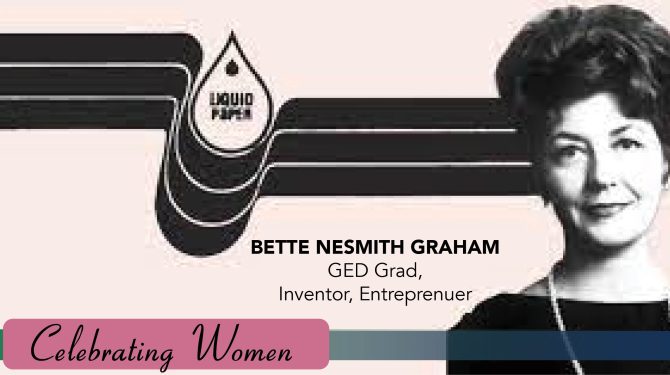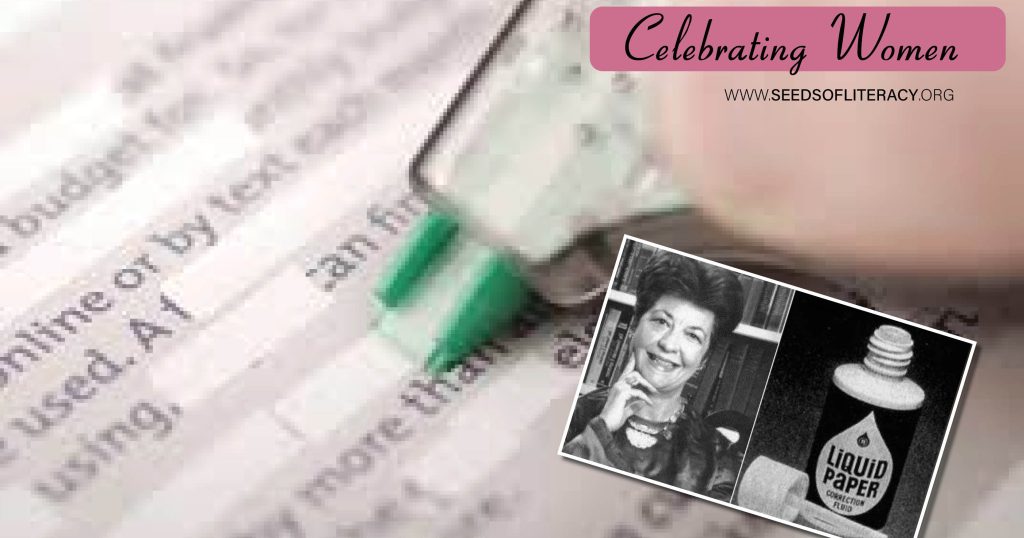A GED Grad Who Changed History

Entrepreneur Bette Nesmith Graham, a GED Grad and Secretary-Turned-Inventor
In 1951, Bette Nesmith Graham, a GED graduate, faced a challenge at work. While she excelled as a secretary, her typing skills fell short, especially with the advent of electric typewriters. Fearing job loss, she sought a solution to correct errors without smudging carbon paper ink.
Inspired by building painters she observed, Bette developed a product she initially called Mistake Out, later renamed Liquid Paper. The innovation was a resounding success, dubbed the “answer to secretarial prayers,” prompting Bette to ramp up production while juggling her office duties.
Ironically, an error on bank letterhead led to her dismissal when she mistakenly signed a letter as “The Mistake Out Company.” Undeterred, Bette fully committed to Liquid Paper, growing it into a pioneering company.
Fostering a progressive workplace culture, she equipped her 11,000 square-foot headquarters with amenities like an in-plant library, on-site childcare, and a wheelchair-accessible facility (more than 2 decades before the Americans With Disabilities Act), embodying values far beyond contemporary standards. Bette’s company even offered tuition reimbursement.
In 1980, she sold her company for $47.5 million, a testament to her entrepreneurial spirit and perseverance.
Not bad for a GED Grad!

WHY STORIES LIKE BETTE’S MATTER
Throughout history, women have faced systemic barriers and unequal rights compared to men. Unmarried women, in particular, often experienced even fewer rights. However, it’s essential to recognize that significant strides towards gender equality have been made, particularly in the last century.
Understanding the historical context sheds light on the progress achieved and the ongoing struggle for women’s rights. It reminds us that the circumstances of a woman’s life could drastically vary based on the time period she lived in, highlighting the importance of continued advocacy and awareness for gender equality.
Until relatively recently, married women encountered numerous legal and societal restrictions. They were often unable to retain their maiden names, control their finances, or seek divorce from their husbands. These limitations profoundly affected their autonomy and opportunities.
Restrictions You May Not Have Realized Are Recent
- In 1927, only 19 states allowed women to serve on a jury, and it wasn’t until 1961 that the Supreme Court ruled exemptions for women as unconstitutional.
- In 1937, with the Matrimonial Causes Act of allowed women to petition for divorce for the first time. The law, however, required the demonstration of cause: adultery, cruelty or desertion. Even then, South Carolina didn’t legalize divorce until 1949! No-fault divorces were still a long way off. California was the first to adopt it in 1969 and the last, New York in 2010.
- May 9, 1960: The Food and Drug Administration (FDA) approves the first commercially produced birth control pill in the world, allowing women to control when and if they have children.
- In 1963, the Equal Pay Act was passed, men and women to be paid equally when doing the same work but even with equal pay, women still weren’t in control of their finances. It wasn’t until 1974 that women gained the right to apply for a mortgage or have credit cards in their own name. Before then, it was legal for applications to be refused or to require a male cosigner.
- In 1976, Hawaii was the last state to officially lift the mandate requiring a women to take her husband’s last name.
Despite these many restrictions, women have managed to incite change and create inventions that have revolutionized the world. This Women’s History Month, our social media will highlight just a few of these trailblazing women that made the world what it is today.
###KLK
